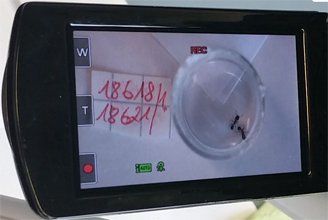Patrick Krapf is a PhD-candidate in the Molecular Ecology group headed by Birgit Schlick-Steiner. In his project, he works with the Alpine ant species Tetramorium alpestre. Patrick tries to explain the variation in behaviour (aggressive and non-aggressive) of T. alpestre using chemical, isotope, molecular, and morphometric analyses.
Tetramorium alpestre is a small ant species found in the European Alps. It is especially interesting due to its social and behavioural polymorphism. Social polymorphism refers to the number of queens present in one colony. There can be only one queen (monogyny) or several to many queens (polygyny) in one nest. A special case of polygyny is the so-called supercolony, a huge entity that can extend several square metres to square kilometres. Supercolonies consist of ten to hundreds connected nests with thousands of queens and ten thousands of workers. Workers and queens from different nests also work harmoniously together. Behavioural polymorphism refers to a variation in behaviour. Usually, aggressive behaviour is observed among monogynous colonies. In monogynous colonies of T. alpestre, both an aggressive and non-aggressive behaviour can be observed. This non-aggressive behaviour is especially intriguing and might be a first step towards a supercolony formation.

Patrick performs several analyses to detect whether the observed aggressive/non-aggressive behaviour correlates with one or several of the following parameters: A) Chemical analyses using gas chromatography to detect cuticular hydrocarbons, which ants use to discriminate nestmates from non-nestmates. B) Microsatellite analyses to detect if colonies are related to each other and how many queens are present within each colony. C) Isotope analyses to detect what food T. alpestre allocates and ingests. D) Morphometric analyses to detect whether workers from monogynous or polygynous colonies are different regarding their size.

Molecular Ecology Research Group

